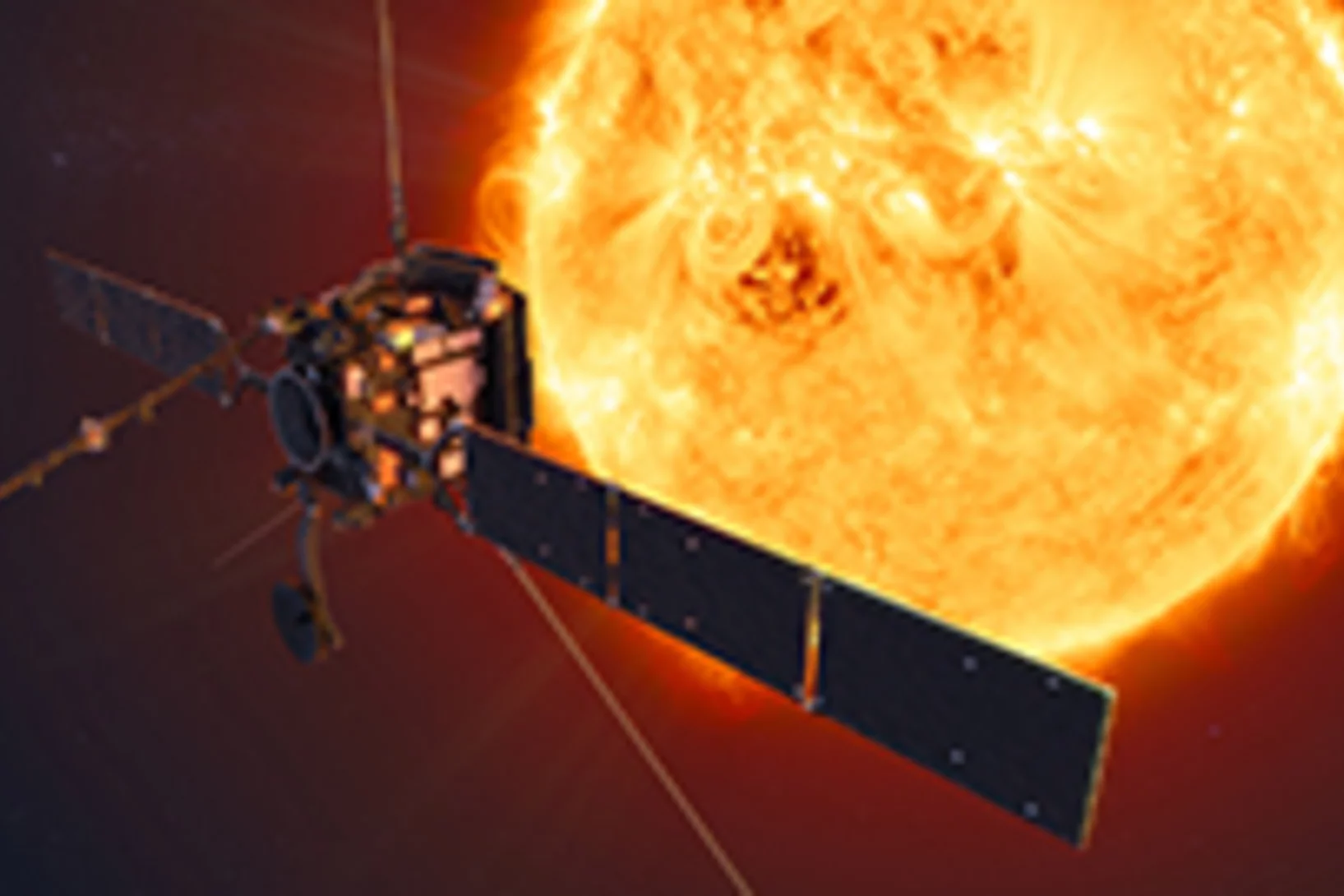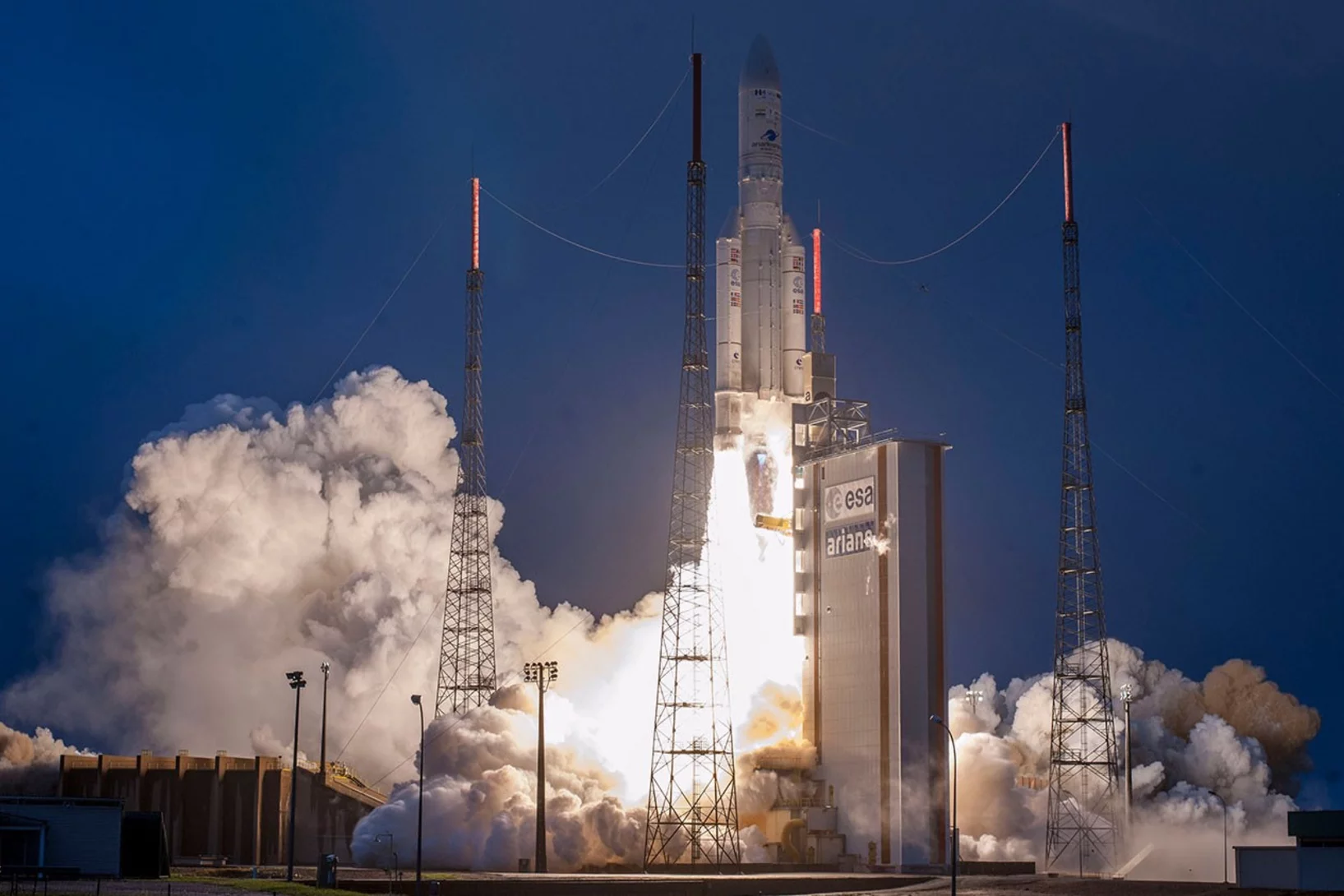The European Space Agency ESA has a new point of contact in Switzerland: ESA and the Paul Scherrer Institute PSI have launched the European Space Deep-Tech Innovation Centre ESDI. It is now located in the immediate vicinity of PSI, in Park Innovaare.
The European Space Agency ESA is strengthening its cooperation with innovation players in Switzerland. ESA and the Paul Scherrer Institute PSI signed a joint contract at the end of October 2024 that marks the start of the European Space Deep-Tech Innovation Centre ESDI. ESDI is located in the Switzerland Innovation Park Innovaare, which in turn is a close neighbour to PSI. The contract defines a first platform of ESDI: Phi-Lab, which is connected to PSI and creates instruments to promote innovation.
“With ESDI we are bringing ESA into Switzerland,” says Johann Richard, head of ESDI. In fact, with ESDI, PSI will be the only location in Switzerland where ESA has a permanent presence. “That will give this international organisation visibility, make it more approachable, and facilitate networking here in the country,” says Richard. ESDI is also intended to serve as a go-between in the other direction: “We want to contribute to bringing developments from the Swiss high-tech and deep-tech areas into use – for ESA’s space research, for use by its member states, and possibly also for completely different areas in industry.”
Innovations in quantum and data sciences as well as in materials research
As a practical step towards realising this second task, ESDI is starting immediately with its own platform for research activities, Phi-Lab, which is headed by Jennifer Wadsworth. “Phi-Lab’s mission is to create research programmes that promote and financially support new and innovative projects in Switzerland,” she explains. The first of these funding programmes will start in 2025. For this, Phi-Lab is initially looking for technological developments from two specific subject areas: quantum research and data science on the one hand, and materials research on the other.
“With Phi-Lab, we can support diverse teams that come together from industry, start-ups, and academic research,” says Wadsworth. Across Switzerland, projects are to be funded that are unsuitable for existing funding measures, for example due to their scope and ambition.
Richard puts it this way: “Our goal is to tackle problems whose solutions will have a significant impact on practice and that cannot be solved with small improvements, but rather require disruptive, interdisciplinary innovations.”
To give an example, Wadsworth and Richard envision that ESDI and Phi-Lab could possibly support the development of a particular technology that would, in the sensors of satellites, enable new and more precise research and that could, at the same time, bring a step towards commercialisation in the area of quantum technologies and quantum computers. They also stress, however, that the exact framework of the research and innovation projects will be determined in close coordination between ESA, Phi-Lab, and research teams and organisations. There will then be open calls for proposals for the funding of specific projects by Phi Lab.
Initiated by SERI, supported by the ETH Domain
Formally, ESDI belongs to ESA, while Phi-Lab is integrated into the organisation of PSI. Practically, Johann Richard and Jennifer Wadsworth work together closely, and both have offices in Park Innovaare.
Switzerland is a founding member of ESA and thus has been involved in the European space community from the start. ESDI and Phi-Lab represent the continuation of an intensified collaboration that led, in May 2022, to the signing of a cooperation agreement between ESA and the Swiss State Secretariat for Education, Research and Innovation SERI. At that time PSI was given the task of concretising these plans in cooperation with the ESA.
Accordingly, ESDI is receiving start-up funding from the SERI. From 2025 on, it will be financially supported by the ETH Domain.
Since ESDI will not have its own laboratories and production rooms, the location at Park Innovaare and the proximity to the PSI come into play: Park Innovaare was inaugurated at the beginning of 2024 and has been able to attract both large companies and innovative start-ups. The laboratories there are equipped for advanced manufacturing techniques, so that prototypes can be realised in mechanical, electronic, and digital form.
PSI also offers know-how, resources, and the well-established logistics necessary for its own top-level research. In particular, the particle accelerators and large research facilities located here mean that the institute is accustomed to dealing with extreme conditions such as those found in space: “Vacuum technology and components that require extremely low temperatures are omnipresent in our large research facilities,” explains Thierry Strässle, head of directorate support at PSI. “Our particle accelerators can generate radiation, so the associated electronics must be designed to be radiation-safe. PSI is therefore experienced and well equipped in all of these areas and can offer targeted support.”
ESA is an intergovernmental organisation, created in 1975, with the mission to shape the development of Europe’s space capability and ensure that investment in space delivers benefits to the citizens of Europe and the world.
ESA has 22 Member States: Austria, Belgium, the Czech Republic, Denmark, Estonia, Finland, France, Germany, Greece, Hungary, Ireland, Italy, Luxembourg, the Netherlands, Norway, Poland, Portugal, Romania, Spain, Sweden, Switzerland and the United Kingdom. Latvia, Lithuania, Slovakia and Slovenia are Associate Members.
ESA has established formal cooperation with other four Member States of the EU. Canada takes part in some ESA programmes under a Cooperation Agreement.
By coordinating the financial and intellectual resources of its members, ESA can undertake programmes and activities far beyond the scope of any single European country. It is working in particular with the EU on implementing the Galileo and Copernicus programmes as well as with Eumetsat for the development of meteorological missions.
Particle bombardment simulates space conditions
There is already a long history of successful collaboration between ESA and PSI: Material tests are carried out on behalf of ESA at the proton irradiation facility PIF. Accelerated protons bombard electronic components destined for space flight to simulate particle bombardment in space.
In addition, PSI is a world leader in the development of detectors used in space flight, among other applications. Take ESA's JUICE mission to the planet Jupiter and its moons, for example, which started in April 2023. On board is the high-tech detector RADEM, developed at PSI, which should provide information about the Jupiter system’s complex radiation conditions and its highly dynamic magnetic environment.
In materials research, quantum research, and artificial intelligence, PSI offers further points of contact for fields of study relevant to ESA’s mission.
Strässle is pleased about Switzerland's commitment to space research: “For Switzerland as a whole, ESDI will be both a virtual and a physical hub for ESA.”
The opening ceremony for ESDI is planned for spring 2025.
Contact
Further information
Additional articles on this topic
About PSI
The Paul Scherrer Institute PSI develops, builds and operates large, complex research facilities and makes them available to the national and international research community. The institute's own key research priorities are in the fields of future technologies, energy and climate, health innovation and fundamentals of nature. PSI is committed to the training of future generations. Therefore about one quarter of our staff are post-docs, post-graduates or apprentices. Altogether PSI employs 2300 people, thus being the largest research institute in Switzerland. The annual budget amounts to approximately CHF 460 million. PSI is part of the ETH Domain, with the other members being the two Swiss Federal Institutes of Technology, ETH Zurich and EPFL Lausanne, as well as Eawag (Swiss Federal Institute of Aquatic Science and Technology), Empa (Swiss Federal Laboratories for Materials Science and Technology) and WSL (Swiss Federal Institute for Forest, Snow and Landscape Research). (Last updated in June 2024)




